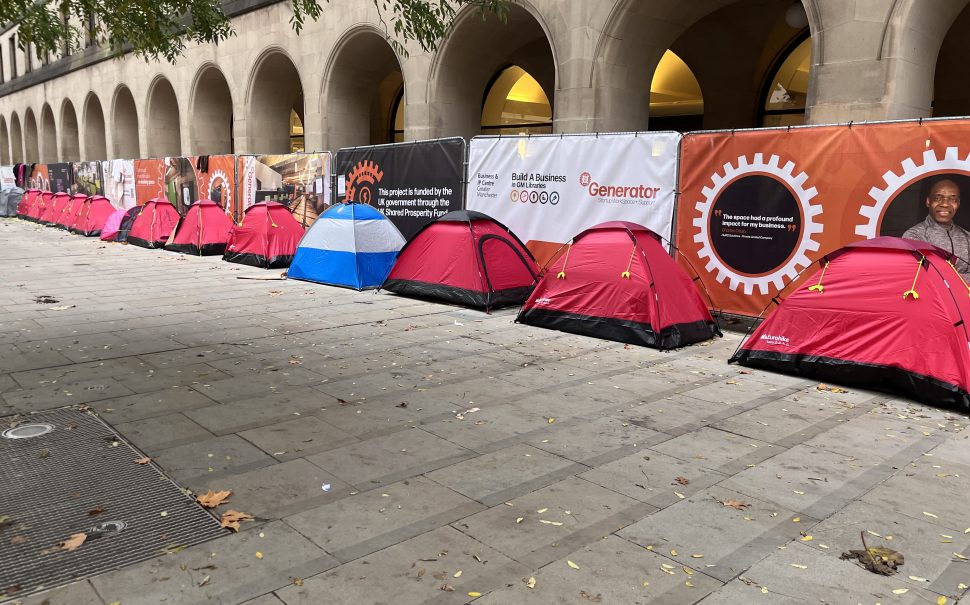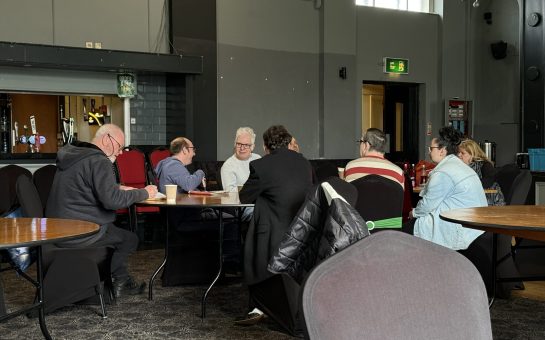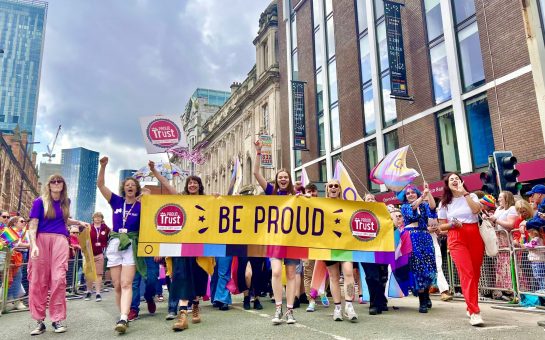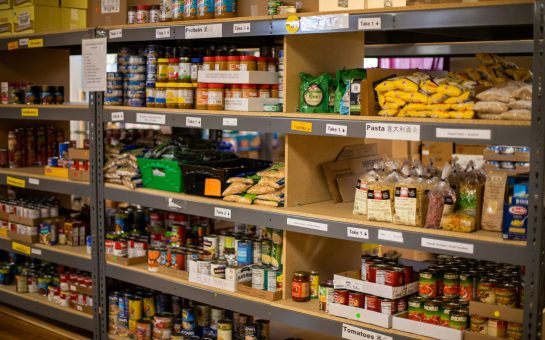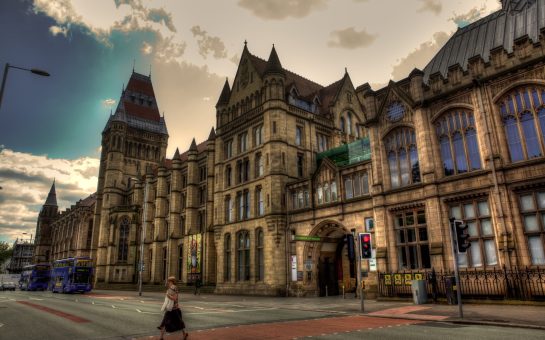Despite continued efforts, homelessness is not decreasing across Greater Manchester – in fact, outside the city centre, rates are going up. MM spoke to Mancunians who have been at risk of homelessness and looked into the data to investigate this growing trend.
Sarah*, from Greater Manchester, moved out of private rented accommodation on her counsellor’s advice after the death of her child. She is currently living with her mother.
But her mother’s house is already home to seven people, and after four months spent sleeping on an airbed with her husband in her mother’s front room, they’ve been asked to leave.
And yet, because she has a job and – currently – a roof over her head, she’s not a high priority in the eyes of the council. Every week when she bids for social housing online she’s told more than 20 people are ahead of her in the queue.
“I’m looking for private accommodation all the time,” she said, “but when prices are £800 or £900 a month it’s just not something I can afford on my salary.
“The cheaper accommodation is quite far away and it’s just not feasible. I need my family for support after everything that happened with my baby.
“I’ve tried every possible kind of route and I’m not getting anywhere.”
Sarah isn’t alone in finding herself at risk of homelessness in Greater Manchester. Experts say a lack of social housing and expensive private rent prices are key factors in the rise of the problem.
Greater Manchester Mayor’s Charity CEO Fran Darlington-Pollock said: “The ultimate driver of homelessness that we see, whatever borough of Greater Manchester that we are in, is a lack of genuinely affordable housing.
“If you haven’t got enough genuinely affordable housing, whether that is in the private rented sector or if that’s a limited supply of social housing, it doesn’t matter how much else you are doing.
“It isn’t going to make a significant change in the number of people who are at risk of homelessness because, ultimately, homelessness is the consequence of not being able to afford your home.”
Shelter policy manager Deborah Garvie said the lack of genuinely affordable social rented homes is also a fundamental cause of housing insecurity and homelessness in the region.
She said: “The lack of social housing has pushed people into an overheated private sector where rents are soaring.”
Burnham’s best efforts
Tackling homelessness was a key focus in Andy Burnham’s re-election campaign earlier this year.
Burnham set up the Bed Every Night Scheme in 2018, which aims to provide support for anyone who is sleeping rough or at imminent risk of sleeping rough across Greater Manchester.
He donates 15% of his salary to the scheme each month and is patron of the Greater Manchester Mayor’s Charity, which funds projects aiming to tackle homelessness across the region.
And yet in the past four years Greater Manchester has seen a 50% rise in the number of households threatened with homelessness, almost three times the average rise in England, according to recent data from the Ministry of Housing, Communities and Local Government.
The number of those already homeless increased by 22.83% since 2020, again higher than the national increase of 18.35%.
Darlington-Pollock said there are numerous factors contributing to the rise of homelessness in Greater Manchester.
She said: “The sustained intervention by initiatives like A Bed Every Night has made a real difference but those external housing pressures, the sustained cost of living crisis and some of the changes in Home Office policy which sped up a backlog in clearing asylum claims, all led to a rise in people who are rough sleeping.
“And that is just the tip of the iceberg.
“There will be more people experiencing all other forms of homelessness as well.”
Regional disparities
In the last financial year, six Greater Manchester boroughs had a higher rate of households experiencing homelessness than the national average – but this problem is unevenly distributed across the region.
These numbers were highest in Manchester, at 26.63 households per 1000, compared to 13.42 across England. In Trafford just 8.93 households per 1000 were affected.
Figures were not available for Salford.
There are signs for optimism in the city centre, as rates in Manchester have decreased since 2022/23. But further out, in boroughs like Rochdale and Tameside, the trend is heading firmly in the opposite direction.
While the rate of households affected by homelessness decreased by almost 9% in Manchester, it increased by 30% in Rochdale.
With this rise comes an increase in demand for support from already overstretched local authorities.
The number of households owed support by their local council to prevent them from becoming homeless rose across five Greater Manchester boroughs in 2023/24.
Darlington-Pollock said: “I don’t think there is anyone in Greater Manchester within local authorities who doesn’t want to support people and get them back on their feet.
“When you see gaps, it’s not because of a lack of effort in these places, it’s because of a lack of resourcing and a lack of housing.
“This is local authorities doing everything they can to respond to huge levels of demand.”
‘There were thousands of people in my position or worse’
Steven, aged 47, from Levenshulme, Manchester also struggled to find new accommodation in his area.
After his landlord passed away and Steven became homeless, he met with an advisor at Manchester City Council, who sent him to homeless charities Shelter and The Booth Centre, which helped him secure temporary accommodation in a hostel.
He said: “When I went to Shelter there were thousands of people in my position, if not worse.
"I met young girls with children who had nowhere to live.”
Despite having lived in Levenshulme for the past 25 years, Steven was originally told there were no social homes available for him in the area and that he may need to relocate to North Manchester.
He managed to secure social housing in Levenshulme but it took him a year to find.
He said: “I knew I was very lucky to get this property that I’m in now, simply because there are so many people looking for social housing.”
Joanna Midgley, deputy leader of Manchester City Council, said: "We are committed to reducing the number of people experiencing homelessness in our city and we are working hard to prevent people becoming homeless in the first place as well as reducing the numbers in temporary accommodation.
"While progress is being made in both these areas, pressures remain, and we look to provide suitable permanent accommodation for those who need it as quickly as we can."
She pointed to a range of measures the council has employed, and a decrease of placements in bed and breakfasts in the city.
"Thanks to a range of interventions, the number of households in temporary accommodation in Manchester is on a downward trend and we have almost entirely stopped B&B placements for families even though numbers are going up in other parts of the country.
"We continue to support people who are in danger of becoming homeless through initiatives such as the changes to our social allocations policy, homelessness prevention hubs and bringing empty properties back into use to get to our ultimate goal of ending homelessness in our city.
"We are also on track to deliver 10,000 social and affordable homes in the next decade, and we look forward to working with the government on tackling some of the underlying causes of the issue through a national homelessness strategy."
The new Labour government announced £233 million of additional spending on homelessness in 2025-2026 in its Autumn Budget in October.
Darlington-Pollock praised this move but said what local councils and charities ultimately need is a longer-term settlement so they can plan their budgets further in advance.
Garvie called for the government to invest in 90,000 new social rented homes a year for 10 years.
*Not her real name
Featured image: Tents outside Manchester Town Hall by Serena Murphy
